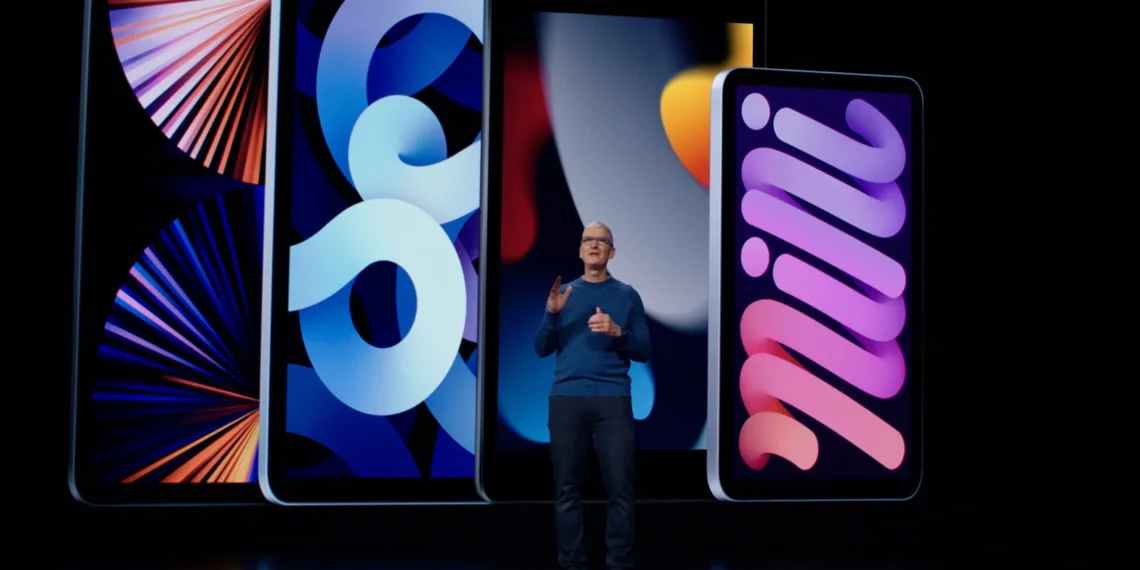Samsung Electronics and LG Display in South Korea are investing billions of dollars in new production capacity for midsize organic light-emitting diode (OLED) panels in order to secure business for Apple’s iPads and MacBooks and keep Chinese rivals out of this premium market.
Samsung Display, the company’s panel unit, is investing 4.1 trillion won ($3.05 billion) in the installation of OLED production lines at the company’s main Tangjeong production campus in South Korea. The change is part of the company’s transition away from liquid crystal displays, with mass production set to begin in 2026.
Samsung Display will manufacture the world’s first OLED panels using 8.6-generation substrates measuring 2,620 by 2,200 millimetres. The goal is to produce 10 million or so midsize panels for notebook computers per year.
Samsung manufactures OLED panels for customers such as Apple as well as its own smartphones. It now controls roughly 70% of the smartphone OLED panel market.

Currently, the panels are made from sixth-generation glass substrates that measure 1,850 x 1,500 mm and are considered cutting-edge. According to a simple calculation, using 8.6-generation substrates would more than double production efficiency.
Panels are created by attaching circuits to glass substrates and dividing them. Larger substrates would result in more panels. However, because larger substrates necessitate more complex technological processes, larger substrates can result in lower production yields.
Display manufacturers have been competing to produce displays with consistent and efficient yields. Samsung’s announcement that it will use next-generation panel-making technology may compel Japanese manufacturers Canon, Nikon, and Tokyo Electron to advance their technology.
LG Display is spending 3.3 trillion won at its mainline Paju plant to install new production lines for midsize OLED panels. The lines will use sixth-generation technology, reflecting the company’s calculation that matching Samsung’s advances is impossible due to technological and cost considerations.

Because notebooks and tablets are switching from LCD to OLED displays, Samsung and LG Display are investing heavily in midsize OLED panels. Apple, a client of both companies, will use OLED panels in the iPad 2024. MacBooks are also expected to use OLED screens in the future.
To meet the growing demand for the vivid images made possible by OLED screens, PC manufacturers such as China’s Lenovo Group, the United States’ Dell, and Taiwan’s Asustek Computer are incorporating OLED displays into their notebooks.
It appears that Samsung and LG Display are investing heavily in OLED as part of their transition away from LCD panels. However, the spending is in response to their Chinese competitors’ offensive.
BOE Technology Group, based in Beijing, already leads the global market for LCD panels. Due to intense competition from Chinese manufacturers, Japanese, South Korean, and Taiwanese companies are scaling back their own LCD operations.
BOE and its competitors Visionox and Everdisplay Optronics are now expanding OLED production capacity, aided by local government subsidies. Samsung and LG Display still control roughly 80% of the global OLED market. However, Chinese suppliers are gradually but steadily gaining ground in smartphone OLED panels.
Samsung earns a consistent stream of revenue from mass-producing OLED panels for smartphones, which are used in iPhones and the company’s own devices. Meanwhile, because LG Display serves fewer fixed clients, earnings have been less consistent.
LG Display reported a 1.09 trillion won consolidated operating loss from January to March, its worst quarterly loss ever, due to a slumping panel market.
LG Display was downgraded by South Korea’s top three credit rating agencies after four consecutive quarters of losses. In order to continue investing in midsize OLED panels, it is borrowing 1 trillion won from sister company LG Electronics.
Also Read:








